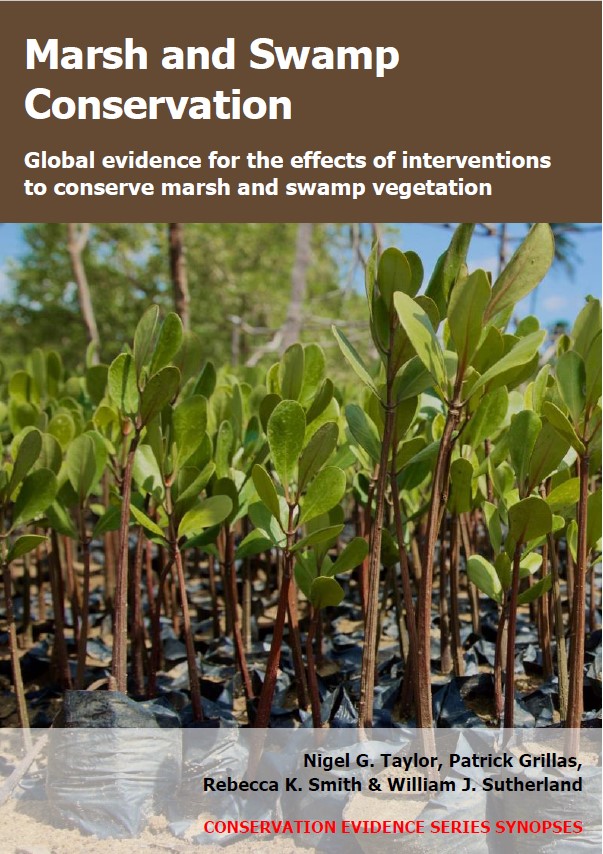Use cutting to control problematic large trees/shrubs: freshwater marshes
-
Overall effectiveness category Unknown effectiveness (limited evidence)
-
Number of studies: 2
View assessment score
Hide assessment score
How is the evidence assessed?
-
Effectiveness
60% -
Certainty
32% -
Harms
10%
Study locations
Supporting evidence from individual studies
A study in 2005–2007 of a dune slack in England, UK (Smith & Kimpton 2008) reported that after cutting grey willow Salix cinerea scrub (along with applying herbicide), ground vegetation recolonized. In 2006, approximately one year after removing willows, 80% of the site was covered with vegetation (mostly herbaceous). There were 108 vascular plant taxa, including 98 natives. Approximately 54 taxa were characteristic of dune slacks. In 2007, approximately two years after removing willows, 95% of the site was covered with vegetation (still mostly herbaceous). There were 111 vascular plant taxa, including 107 natives. Approximately 65 taxa were characteristic of dune slacks. Twenty-eight taxa recorded in 2006 were not present in 2007, but 31 new taxa had colonized the site. Methods: In November/December 2005, dense grey willow scrub in a dune slack (low-lying area amongst dunes) was controlled. Grey willows were cut at ground level, then herbicide (Roundup® Biactive Plus) was applied to the largest stumps. The study does not distinguish between the effects of these interventions. Cut material was burned on site. Vascular plant taxa and their overall coverage were surveyed in August/September 2006 and 2007.
Study and other actions testedA site comparison study in 2008 of five sedge meadows in Illinois and Wisconsin, USA (Lawrence & Zedler 2013) found that a meadow restored by removing trees (and excess sediment, then planting tussock sedge Carex stricta) – contained more but smaller sedge tussocks than nearby natural meadows after 11–14 years. In four of four comparisons, the restored meadow contained a greater density of sedge tussocks (8.4 tussocks/m2) than natural meadows (4.5–5.6 tussocks/m2). Sedge tussocks were also smaller in the restored meadow than in the natural meadows. This was true in four of four comparisons for height (restored: 5 cm; natural: 11–18 cm), perimeter (restored: 39 cm; natural: 51–82 cm) and volume (restored: 560 cm3; natural: 2,342–6,604 cm3). The basal area of tussocks in the restored meadow was only 0.07 m2/m2, compared to 0.12–0.23 m2/m2 in the natural meadows (statistical significance not assessed). Methods: In 2008, sedge tussocks were surveyed in one restored and four natural sedge meadows (15–30 quadrats/meadow, each 1 m2). The restored meadow was formerly a wooded floodplain. Trees and accumulated sediment were removed, then plugs of tussock sedge planted 30 cm apart, between 1994 and 1997. The study does not distinguish between the effects of these interventions on any non-planted sedges.
Study and other actions tested
Where has this evidence come from?
List of journals searched by synopsis
All the journals searched for all synopses
This Action forms part of the Action Synopsis:
Marsh and Swamp Conservation
Marsh and Swamp Conservation - Published 2021
Marsh and Swamp Synopsis





)_2023.JPG)














